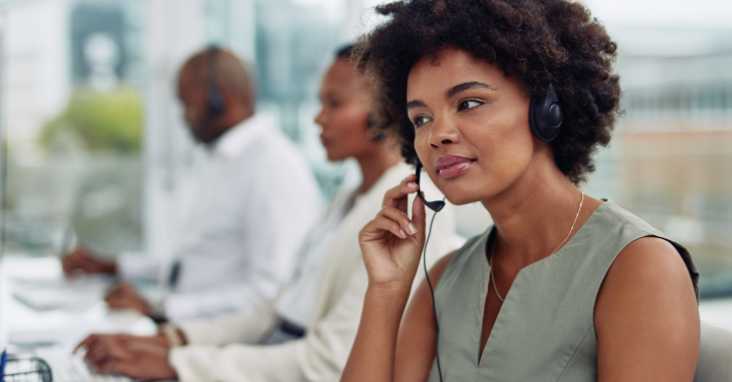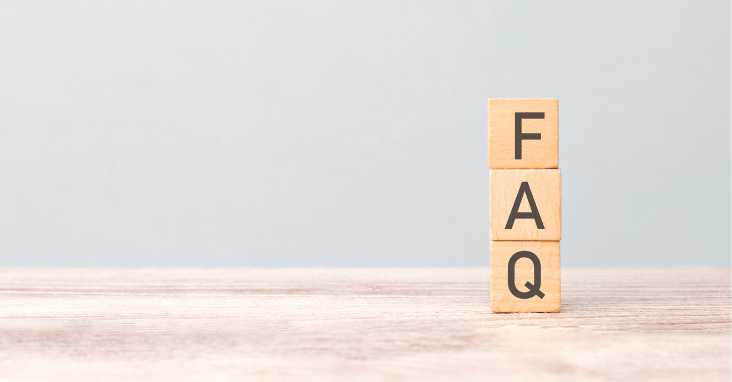Ever wondered about the difference between clients and customers? In the world of business, understanding who you’re doing business with is crucial. It’s about understanding the kind of relationship you share with them. It is here that the distinction between ‘clients’ and ‘customers’ comes into play.
‘Client’ and ‘customer’ are often interchanged, but they denote distinct relationships. A customer buys goods/services in a one-time transaction, while a client engages with a business over time, indicating a lasting association.
A customer generally refers to someone who buys goods or services from a business, typically in a single, transactional exchange. On the other hand, a client refers or engages with a business or professional for their services over a longer period, implying a deeper, ongoing relationship.
The other key difference lies in the nature of the interaction. Customer interactions are often transactional and product-focused. In contrast, client interactions are more service-oriented and involve a level of trust, mutual understanding, and a more personalized experience.
Understanding this distinction between customers tend to is crucial for any business. Not only does it help in shaping your strategies and operations, but it also influences your communication, marketing tactics, and even customer or client satisfaction. This blog post will delve deeper into this distinction, exploring its implications and offering insights on how businesses can effectively manage their relationships with both customers and clients.

Key Takeaways:
‘Clients’ and ‘Customers’ are distinct terms in the business world, each carrying its own meaning and implications.
The understanding of these differences can significantly influence how you approach, retain, and grow your business relationships.
This section is just the beginning of our journey to unravel these terms. Stay tuned as we delve deeper into the individual definitions and implications of clients and customers.

Defining ‘Customers’
Let’s start with ‘Customers’. The term might bring to mind people waiting in line at retail stores, a grocery store or a restaurant, right? You’re not far off. Customers are like the vibrant collection of books on a library shelf. Each one, individual and unique, picked up for the story it holds, then returned once the tale is told. There’s no deep relationship or commitment involved. It’s all about the transaction.
Remember buying your favorite ice cream from the corner shop? The person behind the counter probably didn’t know your name, your likes, or dislikes, yet they served you with a smile. That’s a typical customer relationship for you. In business terms, a customer is someone who buys goods or services from a business, usually on a non-contractual, non-recurrent basis.
It’s a pretty straightforward interaction. You need something, you find a place that sells it, you buy it, and you’re done. Think of it as a dance. The customer and the business dance to the rhythm of supply and demand. When the music ends, the dance is over. The business provided the goods or services, and the customer provided the payment. Transaction complete.
But don’t be fooled by the simplicity of this dance. Customers are crucial for any business. They bring in sales and generate revenue. Without loyal customers, businesses couldn’t survive, much like a plant without sunlight. Customers provide the necessary energy for a business to thrive and grow.
Key Takeaways:
A customer is someone who purchases goods or services from a business, usually without any long-term commitment or relationship.
Customers are crucial to the survival and growth of a business as they generate sales and revenue.
The relationship with customers is often transactional and short-term.
In the next section, we will explore the definition and implications of ‘Clients’.

Defining ‘Clients’
Now, let’s turn our attention to ‘Clients’. If customers are the books on a library shelf, then clients are the treasured volumes in your personal collection. They’re the ones you return to again and again, building a deeper understanding and appreciation over time. They become an integral part of your journey, your narrative.
Picture your relationship with your hairstylist or lawyer, for instance. You don’t just go to them for a single haircut or a one-off legal consultation, do you? Instead, you cultivate a relationship over time, built on trust, understanding, and the ability to meet your specific needs. This is precisely what it feels like to be a client.
In business terms, a client is someone who uses the services of a professional or an organization, often based on an ongoing, contractual agreement. This relationship extends beyond a single transaction. Like a musical symphony, it has multiple movements and recurring themes. It’s a more intricate dance, one that demands greater commitment and understanding from both parties.
Being a client means receiving services tailored to your unique needs. It means being known, understood, and valued. From a business perspective, serving clients often involves providing specialized, personalized solutions. It’s not just about selling a product or service; it’s about building a relationship.
The importance of clients to a business cannot be overstated. They not only provide a steady income stream but also offer opportunities for business growth maximum customer retention and reputation enhancement. They are like the roots of a tree, anchoring it firmly and enabling it to flourish.
Key Takeaways:
A client is someone who uses the services of a professional or an organization, often based on a long-term, contractual agreement.
Clients often receive services that are personalized to their specific needs.
The relationship with clients extends beyond single transactions and is more personalized and intricate.
Clients are vital for a business, providing a steady income stream and opportunities for growth and reputation enhancement.
Next up, we’ll compare these two concepts side by-side and discuss their importance in different business contexts.

The Main Differences Between Clients and Customers
Now that we’ve explored the definitions of customers and clients, let’s pit them against each other. Much like a game of chess, understanding these roles can help us strategize and make informed moves in the business arena.
Depth of Relationship: Transactional vs. Relational
Customers are all about transactions. Picture yourself at a bustling marketplace; you haggle, make a purchase, and move on. It’s a singular interaction, a flash in the pan. Customers generally don’t have an ongoing relationship with your business.
Clients, on the other hand, are all about relationships. Think of a continuous book club meeting where discussions evolve and deepen over time. You don’t just sell to clients; you understand their needs, anticipate their wants, and tailor your offerings accordingly. It’s not just a one-time transaction; it’s a sustained engagement.
Duration of Relationship: Short-term vs. Long-term
Customers might be with you for a moment — like fireflies, flickering in and out of your business. They purchase what they as customers pay money or need and move on. Their engagement with your business is typically short-lived and could be a one-time event.
Clients are akin to a perennial river, constantly engaged and committed. They stick around for the long haul. They value your expertise and the personalized professional service that you offer, so they keep coming back.
Engagement Level: Low vs. High
Customers require less engagement — they’re like riders on a subway, getting on and off as needed. The interaction is limited to the transaction, with no necessity for deeper engagement.
Clients, on the other hand, are a more loyal customer like frequent flyers in a membership program. They engage more deeply with your business, often requiring regular meetings, personalized services, and open lines of communication.
Customization of Service: Standard vs. Personalized
Customers often buy off-the-shelf or standardized products or services — think ready-to-eat meals in a supermarket. The level of customization is usually low.
For clients, services are tailored to meet their specific needs, much like a bespoke suit. They expect and receive a high level of personal attention and customization same service them, closely tied to their unique needs and preferences.
Key Takeaways:
Clients and Customers differ in terms of relationship depth, duration, engagement level, and customization of service.
Customers engage in a transactional, short-term relationship with a business, requiring less engagement and receiving standardized services.
Clients have a deeper, long-term relationship with a business, require high engagement, and receive personalized services.
Next, we’ll delve into the importance of differentiating between these two and how this knowledge can change your business approach.

The Importance of Distinguishing Between Clients and Customers
Why does this distinction between clients and customers matter? Isn’t it just splitting hairs? Well, consider this. Recognizing the difference between a still lake and a rushing river is essential if you want to navigate your boat effectively. The strategies you’d employ in each case would be dramatically different. The same principle applies in business.
Impacts on Business Strategies and Operations
Understanding whether you’re dealing with a customer or a client can drastically shape your business strategies. For customers, you might focus on volume sales, quick service, or competitive pricing. It’s akin to a sprint race, fast and intense.
On the other hand, when dealing with clients, you might invest more in relationship building, personalized service, and customer satisfaction strategies. It’s more of a marathon, requiring endurance and long-term commitment.
Effect on Business Communication and Marketing Tactics
How you communicate with clients and customers also differs. For customers, your communication might be more generic, focusing on the value and benefits of your product or service. Think of it as sending a postcard to a friend: it’s brief, bright, and cheerful.
In contrast, your communication with clients is often personalized and detailed. It’s like writing a letter to a close friend, full of shared experiences and personal details.
Similarly, marketing to customers is often about reaching as many people as possible, like casting a wide net. For clients, however, marketing becomes more targeted, more like a carefully crafted lure for a specific fish.
Consequences for Customer/Client Satisfaction and Retention
Understanding this difference can also influence customer/client satisfaction and retention. With customers, satisfaction might be driven by factors like pricing, convenience quality service,, or product quality. They’re like the audience at a movie: if they enjoy the show, they’ll clap and leave happy.
For clients, satisfaction is often tied to the overall relationship, including the quality of service, trust, and the perceived value they receive. They’re more like fans at a concert, deeply connected and invested in the performance.
In essence, knowing whether you’re dealing with clients or customers isn’t just about semantics. It’s a compass guiding you through your business landscape, helping you align your strategies, communication, and expectations accordingly.
Key Takeaways:
Differentiating between clients and customers impacts business strategies, communication methods, and customer/client satisfaction.
Dealing with customers might involve strategies focused on volume sales, quick service, and competitive pricing. Communication is often generic and marketing is about broad reach.
Dealing with clients could require relationship-building strategies, personalized service, and focused communication. Marketing becomes more targeted.
Recognizing these differences can lead to higher satisfaction and retention rates, whether you’re dealing with clients or customers.
Next, we’ll explore how businesses can and customer based companies transition customers into clients for added value and growth.

Transitioning Customers into Clients
Ever wondered if you could turn your one-time customers into your most loyal customers and clients? It’s not just wishful thinking; it’s like planting a seed and watching it grow into a tree, given the right care and nurturing.
Steps to Deepen Relationships with Customers
Build Trust: Just like building a solid house starts with laying a strong foundation, transitioning customers into clients starts with trust. Provide high-quality products or services consistently. Keep your promises. Over time, this builds a level of trust that can transform a transactional relationship into a more enduring one.
Understand Their Needs: The key to customizing your services lies in understanding your customers’ needs. It’s like being a detective, always on the lookout for clues about what your customers want and how you can better serve them.
Provide Exceptional Service: Going the extra mile can turn a one-time customer into a regular client. Think of it like cooking a meal; adding a dash of care and a sprinkle of attention to detail can make all the difference.
Communicate Regularly: Regular communication keeps you fresh in your customers’ minds. It’s like watering a plant, keeping it alive and helping it grow. But remember, no one likes spam — make sure your communications are valuable and relevant.
The Benefits of Transitioning Customers into Clients
Transitioning customers into clients can be a game-changer for businesses. It’s akin to moving from a noisy marketplace to a dedicated showroom. Clients provide a reliable income stream and offer opportunities for upselling and cross-selling purchase professional services. They are more likely to refer others to your business, acting as advocates for your brand.
In essence, while customers are the lifeblood that keeps your business running, clients are the heart that pumps this lifeblood, providing the consistent rhythm your business needs to grow and thrive.
Key Takeaways:
Transitioning customers into clients involves building trust, understanding their needs, providing exceptional service, and maintaining regular communication.
This transition can benefit businesses by providing a reliable income stream, opportunities for upselling and cross-selling, and potential for positive referrals.
In a moment, we’ll bring all these insights together and reaffirm the central theme of understanding and leveraging the difference between clients and customers.

Harnessing the Power of Difference
Have you ever puzzled over a crossword, wracking your brain for the perfect word to complete the puzzle? Well, understanding the difference between clients and customers can feel like finding that perfect word. It’s like the moment when the missing piece of the puzzle falls into place, revealing a clearer picture of your business relationships.
Indeed, as we’ve explored in this blog post, customers and clients are different shades of the business spectrum. They’re both essential for a thriving business, but they require different approaches. Think of them as distinct instruments in your business orchestra. Each plays its own part, and understanding their unique tones can help you compose a beautiful symphony.
Understanding these key differences here — the transactional, fleeting nature of customers, versus the relational, enduring nature of clients — is not just an academic exercise. It is a crucial aspect of your business strategy. It informs how you engage, communicate, satisfy, and retain those who interact with your business. It’s like understanding whether you’re painting on canvas or on a wall — each requires a different approach.
In the grand scheme of things, what matters isn’t whether you have more clients or customers. Instead, it’s about understanding who they are, what they mean to your business, and how best to serve them. In this journey, it’s essential to remember the words of Phil Jackson, who said, “The strength of the team is each individual member. The strength of each member is the team.”
Whether they’re clients or customers, they form a part of your business team. Their strengths, their interactions, their satisfaction — they all contribute to the strength and success of your business. Recognize them, value them, and play to their strengths.
Key Takeaways:
Customers and Clients are different, each with unique expectations and relationships with your business.
Understanding these differences can significantly influence how you approach, communicate, and retain these individuals.
Both clients and customers are vital, contributing in unique ways to the success of your business.
It’s not about having more clients or customers, but about understanding and serving them effectively.
Remember, each client and each other client and customer has is a part of your business story, making it richer and more dynamic. And just as we value each character in a story for the part they play, each client and each other client vs customer has is valuable for their unique role in your business. Celebrate these differences, learn from them, and use them to shape your business narrative. After all, every business is a story, and understanding your clients and customers is key to telling it well.

FAQ
What is the difference between a client and a customer?
A customer is someone who buys goods or services from professional person or a business, often one time purchase, in a single, transactional exchange. A client, however, typically engages with a business or a professional on a recurring basis for personalized services. The relationship with a client is generally deeper and more personalized than with a customer.
How can professional services firms distinguish between clients and customers?
Professional services firms, like law firms, often have clients rather than customers. This is because their services are usually personalized, provided over a longer period, and based on a relationship of trust and understanding. They engage more deeply with their customer vs client- based businesses and clients, providing tailored solutions based on the clients’ unique needs.
How does a business develop customer loyalty?
Customer loyalty can be fostered by consistently delivering high-quality products or services, providing excellent customer service, understanding and meeting customer needs, and building trust over time. Regular communication, loyalty programs, and personalized or innovative rewards programs or offers can also contribute to customer loyalty.
What is meant by ‘customer success’?
Customer success refers to ensuring that customers achieve their desired outcomes using your product or service. This often involves understanding customer needs, using customer based businesses providing tailored solutions, proactive communication, and offering support when needed successfully developing customer loyalty.
How can a law firm develop loyal clients?
A law firm can develop loyal clients by understanding their specific needs and objectives, providing tailored, high-quality legal and professional advice together, maintaining regular communication, building trust through transparency and confidentiality, and consistently being client based companies delivering positive results.
How can a business effectively handle customer disputes?
Effective handling of customer disputes often involves active listening to understand the customer’s issues, empathizing with their situation, offering fair solutions, and acting quickly to resolve the customer dispute itself. Maintaining a professional demeanor, following up with loyal customer to ensure the issue has been resolved, and learning from the experience can also help manage disputes effectively.

Are SaaS customers clients?
A customer will choose the kind of service they want to pay for right away. They want an immediate exchange of value for their money. All SaaS clients are customers, but not all SaaS customers are clients. Customers pay money for precisely the SaaS product they need in order to immediately gain value from it. They may get what they were looking for and leave after a trial period or perhaps a billing cycle or two. Sometimes, customers’ needs were short-lived so they will no longer find that the software meets their requirements and no longer use the product.
How can a SaaS business maximize customer retention?
A SaaS (Software as a Service) business can maximize customer retention by offering reliable, user-friendly software solutions that meet customers’ needs. Regular updates, proactive customer support, training resources, and feedback mechanisms can also help retain customers.
What practices contribute to the best customer service?
Practices that contribute to the best customer service include understanding customer needs, providing prompt and efficient service, being respectful and empathetic client customers, resolving issues effectively, and going the extra mile to satisfy customers.
How can a business increase customer acquisition?
Businesses can increase customer acquisition through effective marketing strategies, offering high-quality products or services, competitive pricing, excellent customer service, and leveraging positive customer reviews and referrals.
How can a business reduce customer churn?
Reducing customer churn often involves understanding why customers leave, improving product or service quality, enhancing customer service, and maintaining regular communication. Offering loyalty programs or personalized incentives can also help retain customers.














